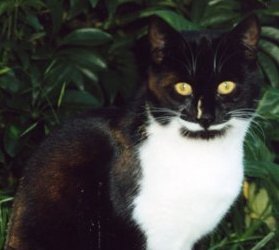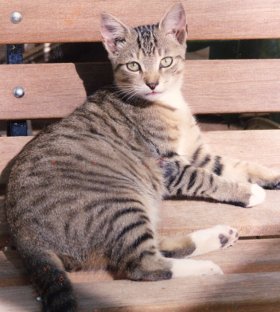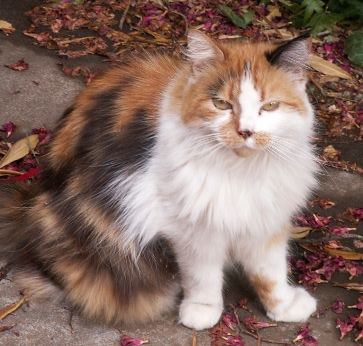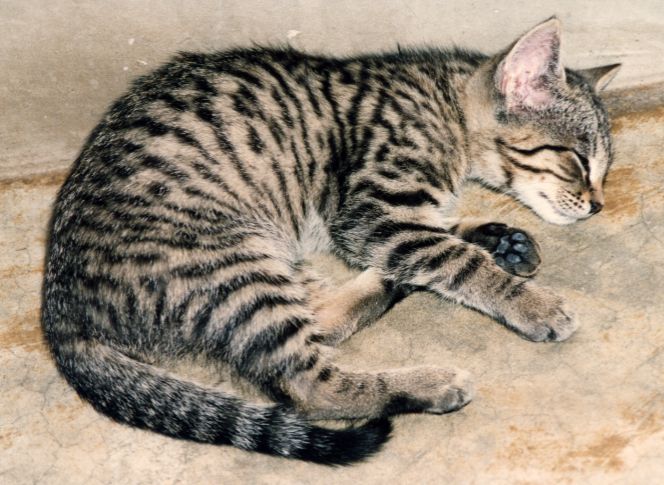Unfortunately, cat hating has become fashionable. Some people seem to think that hating cats makes them conservationists which, as the REARK survey notes, is quite unreasonable (1):
“Equating hatred of cats with environmental awareness is an emotive and dangerous practice. More importantly it obscures the truth.”
In this climate, anti-cat statements can be accepted uncritically. Supposedly authoritative claims are made about how many animals, especially native animals, cats kill, but usually without any real evidence.
It is very disappointing that well-respected conservation biologists (2) chose to refer to only 1 survey, not published in a refereed journal, which claims that each household cat kills 30 vertebrates a year.These authors state: “Paton (1991) studied well-cared for household cats in South Australia…” (2), giving the impression that Paton actually observed and monitored these cats, which he did not. Instead he distributed questionnaries through bird lover groups.
Paton’s questionnaire
Paton distributed questionnaires asking people how many animals they thought their cat(s) had killed in the previous 12 months. Paton himself recognises that the results are nothing more than a “guesstimate”, and yet his figures are widely quoted as if they were fact.
Of the 3000 questionnaires distributed by Paton (1991), 709 were returned, covering 700 cats in Adelaide suburbs, in country towns and in rural areas. The majority of the questionnaires (88%) came from members of the SA Ornithological Society and the Bird Observers Club, hardly a representative sample of the population.
- Cats in rural areas were reported to catch over twice as many prey as suburban cats.
- The average number of prey reported caught per year was 30.
- Suburban cats (the majority of cats) were reported to catch less, and rural cats (far fewer in number) caught more.
However, in his discussion Paton assumes that each suburban cat catches 30 prey a year, even though this is the average, not what suburban cats caught.
He notes that the most frequently caught birds included turtle doves, blackbirds, starlings and house sparrows (all introduced, not native), and that frequently recorded mammals were house mice, rats and rabbits (all introduced, not native).
Nevertheless, he wants to claim that suburban cats are a dire threat to native wildlife (3).
A more reliable survey
In contrast, a REARK survey in 1994 (1), using the same questionniare method but with a better sampling technique, produced a quite different result. The survey included 4093 households in all capital cities except Darwin. People to be interviewed were selected from the White Pages based on population densities in different postcode areas. Owners were asked specific questions about the hunting behaviour of their cat over the previous 12 months.

- 25% of households had at least 1 cat (~30% in Adelaide)
- the number of cats covered by the survey was 1550
- 55% of cats caught some prey 44% cuaght none
- the average number of prey caught by each cat each year was 4.76
- this is a massive difference to Paton’s 30.
This total was broken down as follows:
| Prey | Prey | % of cats | |
| per cat | involved | ||
| per year | |||
| Rats, mice, rabbits | 2.42 | 51.0 | |
| Native mammals | 0.02 | 0.4 | |
| Introduced birds | 0.77 | 16.2 | |
| Native birds | 0.23 | 4.8 | |
| Native reptiles | 1.32 | 27.7 | |
| Total | 4.76 | 100.0 |
Cats with bells on their collar actually caught more prey than cats without bells, probably because bells were more likely to be attached to proven hunters. The above figures indicate that two thirds of the prey caught by suburban cats were introduced species, which the conservations regard as undesirable anyway.
Detailed study in Canberra
The most detailed study was conducted by Barratt (4, 5), and involved cats in Canberra suburbs bordering nature reserves. He not only asked owners to estimate the prey caught by their cat(s) in the previous 12 months, but also to keep a daily record of prey over a 12 month period. Data were available on 138 cats.There was a huge variation between cats:
- 70% caught less than 10 prey a year
- 6% caught over 50 a year
- bells on the collar had no effect on the number of prey taken.

An average of 10.2 prey per cat per year were recorded, made up as follows:
- Mammals 6.9 (99% introduced)
- Birds 2.6 (42% introduced)
- Reptiles/amphibians 0.7
- Total 10.2
Rats and mice made up 63% of the total prey. Among birds, the most common species were house sparrows, blackbirds (introduced), silver eyes and crimson rosellas (native). Populations of all these species are high, so much so that 10,000 crimson rosellas and 20,000 silver eyes are killed each year in Canberra as pests. Therefore, there is no sign that populations of the most heavily preyed upon birds have declined. Barratt notes (5):
“…predation estimates alone do not necessarily reflect relative impacts on different prey types. Nor do apparently high rates of predation prove that prey populations are detrimentally affected, particularly in highly disturbed and modified environments. For birds, at least, habitat-related factors may be substantially more important in determining communal structure in suburbs than predation by house cats.”
This conclusion is an important counterbalance to Paton’s emotive claims. It is interesting to note too that estimates of their cat’s hunting behaviour made by Barratt’s interviewees were twice as high as the actual prey recorded, another important limitation to the Paton study.
If statements are made about cat behaviour and the environmental impact of cats, they should be based on properly conducted scientific investigations, and not clouded by hatred of cats.
References
- REARK Research (1994). Research Report on the Metropolitan Domestic Cat: A Survey of the Population Characteristics and Hunting Behaviour of the Domestic Cat in Australia. Petcare Information and Advisory Service, Melbourne
- Burgman, M. & Lindenmayer, D. (1998). Conservation Biology for the Australian Environment. Surrey Beatty & Sons, Chipping Norton (NSW)
- Paton, D. (1991). Loss of wildlife to domestic cats, in Potter, C. (ed), The Impact of Cats on Native Wildlife: Proceedings of a Workshop held on May 8-9 1991, ANPWS, Canberra
- Barratt, D. (1997). Predation by house cats, Felis catus (L.), in Canberra, Australia. I. Prey composition and preference. Wildlife Research, 24: 263-277
- Barratt, D. (1998). Predation by house cats, Felis catus (L.), in Canberra, Australia. II. Factors affecting the amount of prey caught and estimates of the impact on wildlife. Wildlife Research, 25: 475-487